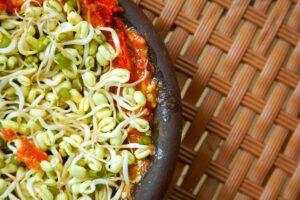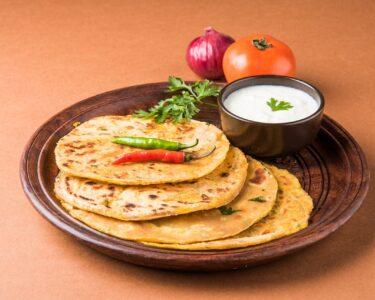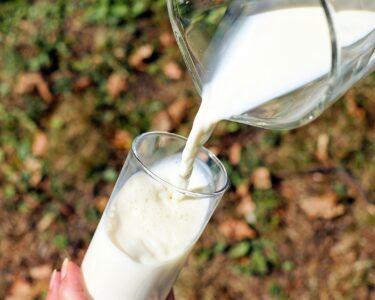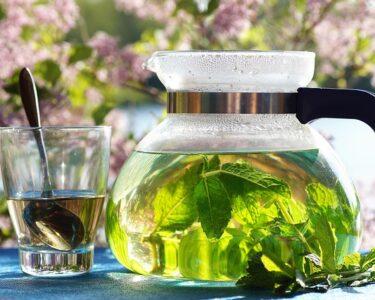Struggling with Chronic Kidney Disease (CKD)? The doctor has asked you to limit your protein intake. But how much is low or how much can be considered high? Are you eating enough protein in your Indian diet? Can you take dal or milk? Are fish/ egg/ chicken safe for you? Confused? Let’s try to find the answers.
This blog is going to be all about –
- How much protein does a normal individual need?
- What is high high-protein diet?
- What is a low-protein diet?
- What is the protein requirement for kidney patients not on dialysis?
- Can a renal patient have dal? If yes, then how much?
- Which is the best /safest dal for a CKD patient?
- Can CKD patients have milk /milk products?
- Which milk or milk product is best for a renal patient?
- How much milk/milk product is sufficient for CKD patients?
- Can a CKD patient have egg/ chicken/ fish/seafood?
How much protein does a normal individual need?
As per the Indian Council of Medical Research (ICMR) 2020 Regular Dietary Allowance (RDA) guideline, a healthy individual requires at least 0.83 g /kg body weight of protein per day. That means, if your weight is 60 kg, you need 60*0.8 = 48 g of protein per day.
14-20% of your total calories must come from protein.
What is a high-protein diet?
If your daily protein intake is somewhat between 1.2 -2 g protein/kg body weight – this is considered a high-protein diet. For example – if your weight is 60 g and you are taking approx. 72-120 g of protein per day, you are on a high-protein diet.
In this case, generally, 30 -35% of total calories come from protein.
What is a low-protein diet?
If you are taking 0.6g of protein /kg body weight, you are on a low-protein diet. That means, if your weight is 60 kg and consuming 60*0.6 = 36 g of protein per day, you are already on a low-protein diet.
A low-protein diet restricts your protein intake to 20 – 50 g of proteins per day depending on your body weight. Usually 5-10% of total calories come from protein.
Table 1: Summary of Optimum, low and high protein diet
| Optimum Protein in a balanced diet
(as per ICMR for a healthy individual)
|
High protein diet | Low protein Diet | |
| Protein requirement
|
0.83 g/ kg body weight | 1.2 – 2 g / kg body weight | 0.6 g/ kg body weight |
| Total calorie percentage
|
15-20% | 30-35% | 5-10% |
Are you taking optimum protein per day?
Studies have shown how decade after decade Indian diet is becoming concentrated on grains/ cereal and the proportion of protein-rich foods, vegetables, and fruits is getting smaller.
It has been found that on average Indians consume only 35-45 g of protein per day. The consistent protein gap is making Indians protein deficient. Study shows, most Indians consume only 0.5-0.6 g/ kg body weight of protein per day.
Almost 80% of our Indian population don’t meet their daily protein requirements and 90% of the Indian population aren’t aware of their daily protein requirements. 9 out of 10 people don’t meet their daily protein requirements. (1,2,3)

How much protein do CKD patients need?
Table 2: How much of protein is safe for CKD patients not on dialysis –
| CKD stage | Glomerular Filtration Rate (GFR) | Quantity of protein advised | Quality of protein advised |
| 2 | Above 55ml/min | 0.8g/kg /day | 60% of high biological value (HBV) protein |
| 3-5 | Between 25-55 ml/ min | 0.6 g/ kg/day | 60% of high biological value (HBV) protein |
| Below 25 ml/min | 0.3g/kg/day | Vegetable source of protein with supplemented with a similar amount of mixture of amino acids and keto analogs (nitrogen-free essential amino acids used in conjunction with a very low-protein diet) |
Reference – NKF KDOQI (The National Kidney Foundation Kidney Disease Outcome Quality Initiative)
Does a CKD patient with diabetes have different protein requirements?
Patients with CKD and diabetes are generally recommended a diet having protein 0.8 g/kg/day. So the recommended protein intake is no different from any non-diabetic CKD patient.
Does your renal diet need a protein restriction?
As mentioned above, as per ICMR, the general protein requirement for a healthy individual is 0.83g/kg body weight.
As per NKF KDOQI, stage 2 CKD patients with GFR above 55ml/min also require 0.8 g protein per kg body weight.
If you notice carefully, the restriction is on consuming a “high protein diet” not on an “optimum protein diet”. Since on average Indians are already consuming a low protein diet (0.5-0.6 g/kg body weight per day), no further restriction is needed for most of the patients.
Rather, the protein requirement of a CKD patient needs to be calculated first based on the vital statistics, muscle mass, activity level, blood reports, and GFR value. The diet must be planned to fulfill the adequate protein needs to prevent muscle wasting & improve overall health. (4, 5, 7,8)
Why high protein diet is avoided in CKD?
People believe that consuming more protein will help to increase muscle mass. However, in reality, our body is skilled enough to recycle the amino acids reducing the nitrogenous waste for its maintenance.
In chronic kidney disease, your kidneys are already struggling to function properly. The glomerulus (microscopic filter) filtration rate drops causing less urine output and accumulation of metabolic waste products in the body. (6)
Under this situation, a high protein diet will–
- accumulate waste products in blood
- Increase intra-glomerular pressure which can cause damage to the glomerular structure and lead to aggravate the CKD.
- Increase proteinuria
- Increase blood pressure
- Increase the severity of acidosis
Therefore protein-restricted but proper calorie-providing diet is advised for advanced CKD patients to prevent malnutrition, and maintain the ideal body weight, normal serum albumin, and electrolyte value.
Potassium and phosphorus content of the diet needs to be under check–
No, choosing the right protein source is not that simple in the CKD diet. The other major setback for CKD patients is that their bodies cannot flush out the phosphorous and potassium well.
A high level of phosphorous leads to the influence of the parathyroid hormone to pull calcium from your bone to fix the disturbed balance. Result? The bones started becoming weak.
Apart from this, high potassium accumulation may lead to metabolic acidosis, breakdown of RBC (hemolysis), breakdown of muscle, uncontrolled diabetes, and also put your heart health at risk.
The good news is right cooking technique can reduce the potassium and phosphorous content of food to a large extent.
Plant protein or animal protein which is best for CKD patients?
The quality of protein coming from any animal source is always better compared to plant protein. Animal protein contain all the essential amino acids and holds a high biological value.
On the other hand, protein coming from plant sources might be incomplete when consumed alone. But mixing it with other grains makes it a complete protein. For example – eating dal with rice/ roti makes it a complete protein. However, these are high in potassium and phosphorous content too. (16, 17)
In addition, plant proteins are generally rich in fiber too which helps to improve gut health, and heart health and gives less stress to the kidneys.
Study shows, that incorporating 50% from plant sources in the CKD diet has given better results. (9, 10)

How about the protein choice for Indians?
The traditional Indian diet is already balanced with the representation of a variety of food groups in daily diet.
It has a mixture of plant protein in the form of pulses/ legumes/ sprouts along with grains (rice/ roti etc) etc and also animal protein like milk/curd/chena/paneer/egg/fish/chicken/mutton etc depending on the availability of fresh foods in that region.
Please note, “non vegetarian” from India and “non vegetarian” from another continent is very different. For Indians non veg food item is just a small part of daily diet.
Having a piece of fish (70 g) or 2-3 pieces of chicken (75g) or an egg a day along with dal, salad, sabji and rice/roti is no where similar of having 200 g of beef stake or pork belly with mashed potato/ fries and grilled veggies. The later is way too high in protein as well as in saturated fat and low in fibre compared to our Indian thali.
So, relax, having adequate protein from variety of foods is the best choice for Indian CKD patients.
Can a renal patient have dal?
Dal is a good source of protein, especially for the Indian vegetarian diet. 100 g of dal generally provides 20-25g of protein. However, dal contains a good amount of potassium and phosphorus too. (12)
Therefore, it is important to –
- Pick the right variety of dal which has comparatively low potassium and phosphorous
- Cook it in the right way to reduce its potassium and phosphorous content
- Eat the right amount
Which is the best dal for renal patients?
Regular masoor dal, yellow moong dal, tuver dal, kulthi are safe to consume daily.
However, restrict the consumption of green moong, whole masoor, chole, chana, rajma, or any whole dal with its skin. These dal/legumes are comparatively high in potassium and phosphorous content. One can enjoy a small bowl of chole/ rajma/ chana once or twice a month following the proper cooking technique.

How much dal is safe per day for a CKD patient?
Your protein requirement depends on your Glomerular Filtration Rate (GFR), muscle mass, and blood reports.
Note that, the average protein content of dal is – 20 g/100 g
1 bowl of dal is approx. 30 g (raw weight) will provide about 6 g of protein
You can get approx. 12g of protein if consuming 2 bowls of dal daily.
Table 3: Protein, Potassium, and Phosphorous content of a few common dal/legumes:
| Pulses/ Legumes | Protein
(gm/100g) |
Potassium
(mg/100g) |
Phosphorous (mg/100g) |
| Masoor dal | 25.1 | 629 | 293 |
| Chana dal/ Bengal gram | 20.8 | 720 | 331 |
| Urad dal/ Black gram | 24 | 720 | 385 |
| Kulthi dal/ Horse gram | 22 | 762 | 311 |
| Kala Chana/ Bengal gram | 17.1 | 808 | 312 |
| Green Moong/ Green gram whole | 24 | 843 | 326 |
| Tuer/ Arhar/Red gram | 22.3 | 1104 | 304 |
| Yellow Moong/ green gram dal | 24.5 | 1150 | 405 |
| Rajma | 22.9 | 1406 | 410 |
| Lobia/ Cow pea | 24.1 | 1131 | 414 |
| Moth | 23.6 | 1096 | 230 |
| Soybean | 43.2 | 1797 | 690 |
Source – Nutritive Value of Indian Foods, C. Gopalan, ICMR-NIN, 2021
How to cook dal to reduce its potassium and phosphorous content?
Soaking helps to reduce potassium, phosphorous, and other antinutritional factor content to a large extent. Always soak dal/ legumes in excess water (8-10 times) overnight. You can also use hot water for soaking. The next day, wash the dal a few times again using excess water before cooking. Try to use no or very little salt while cooking.(11)
If you are making sambar/ vegetable dal, make sure you wash the vegetables repeatedly and chop them into small pieces, wash again boil with excess water, and drain the water before adding it to the dal.
Can CKD patients have sattu/ besan/ bori/ mangori/ gatta/cheela/ dhokla/ Khandvi etc?
Note that, sattu, besan, bori, mangori, gatta, cheela, gatta, dhokla, and khandvi all are either gram flour or prepared with besan or any form of dal.
Preparations where soaking dal for a good 5-6 hrs in excess water is not possible, avoid that dish for regular consumption. For example – dhokla, sattu, litti, besan cheela etc are made from sattu or besan, where you have no option to soak, therefore avoid these items. However, having a small portion once a month is fine to add some variety to the diet.
Is sprout safe for daily consumption?
Sprouting of dal always makes it more nutritious. Note that sprouts are rich in potassium content. 100 g of moong sprout contains approx. 1080mg of potassium / 100 g.
CKD patients must boil the sprouts with excess water and discard the boiled water before consuming. You may enjoy boiled sprouts once a month depending on your condition.

Are soybeans, soy milk, and tofu safe for kidney patients?
Soybean and its products – like soy milk, tempeh, tofu, soy chunk, soy protein, etc are controversial for CKD patients. Multiple studies show soybeans are beneficial for CKD patients. On the other hand, some studies claim soy or its products are not safe for CKD patients because of its high potassium, phosphorous, and sodium content.
So, what to do? Moderation is the best choice when you are in doubt. Having limited amount of soy products 3-4 times a month should be safe. (13, 14, 15)
Can CKD patients have milk /milk products?
Milk is considered as first quality protein. Therefore, if you can digest milk, it is an excellent choice to meet your protein needs.
Cow’s milk and buffalo milk, toned milk, double toned milk are safe to consume. However, try to avoid skimmed milk as it has a higher potassium content. Consuming homemade chena, and curd of cow’s milk is also fine for daily intake. (19, 20)
Avoid taking packaged paneer, curd, or any milk product to limit intake of additional sodium, preservatives, and additives. Do not consume milk powder, khoa, cheese, or any product that contains these as ingredients for its high potassium, phosphorous, and sodium content.
Table 4: Protein, Potassium, and Phosphorous content of a few milk and milk products:
| Milk/ Milk Product | Protein
(gm/ 100g) |
Potassium
(mg/100g) |
Phosphorous (mg/100g) |
| Cow milk | 3.2 | 140 | 90 |
| Buffalo milk | 4.3 | 90 | 130 |
| Skimmed cow milk | 2.5 | 162 | 90 |
| Chenna (Cow milk) | 18.3 | 63 | 138 |
| Curd (cow milk) | 3.1 | 130 | 93 |
| Buttermilk | 0.8 | 151 | 30 |
| Cheese | 24.1 | 98 | 790 |
| Khoa (Cow milk) | 20.0 | 1019 | 956 |
| Skimmed milk powder (Cow milk) | 38.0 | 1720 | 1000 |
| Whole milk powder (Cow milk) | 25.8 | 1330 | 730 |
Source – Nutritive Value of Indian Foods, C. Gopalan, ICMR-NIN, 2021
How much of milk and milk products is safe for kidney patients for daily consumption?
Your protein requirement is based on your height, age, weight, activity level, blood test reports, and GRF value. It is always better to diversify your protein sources as much as possible for holistic nutrition.
Having 200 – 300 ml of milk and homemade milk products is fine as a part of a balanced diet. (18)
For example –
200ml milk per day provides approx. 6.4 g of protein
100 ml curd provides – 3.1 g of protein
Therefore, adding 300 ml of milk/ milk product can provide approx. 9.5 gm of good quality protein per day.

Is it safe to have egg/ prawn/ chicken in CKD?
Egg, prawn, chicken, mutton – these are excellent sources of good quality, high biological value containing protein. Thus, having a measured amount of these items is safe even if you are struggling with CKD. (21)
Don’t forget to be extra careful with washing the raw items thoroughly and soak for at least 2 hrs before cooking to reduce the potassium and phosphorous content.
Renal patients are prone to getting infections. Thus, avoid the “half done” style of cooking. Food must be fully cooked. Always have a full-boiled egg rather taking a half-boiled one.
If the patient has having high sodium level, try not to use salt while cooking. You can add limited salt on top after the dish is served.
Do not eat from outside or avoid having processed meat like sausage, salami, bacon etc.
Table 5: Protein, Potassium, and Phosphorous content of common non-veg foods:
| Protein (gm/100g) | Potassium
(mg/100g) |
Phosphorous (mg/100g) | |
| Egg – Hen | 13.3 | 198 | 220 |
| Egg – Duck | 13.5 | 220 | 260 |
| Chicken | 27 | 223 | 209 |
| Mutton | 18.5 | 270 | 193 |
| Prawn | 19.1 | 262 | 278 |
| Liver – goat | 20.0 | 160 | 279 |
Source – Nutritive Value of Indian Foods, C. Gopalan, ICMR-NIN, 2021
How much egg/prawn/chicken can be taken daily?
As mentioned earlier, you might have CKD but that does not always mean you need no protein. Your protein requirement is based on your age, height, weight, muscle mass, blood reports, activity level, and GRF value.
As per NKF KDOQI (The National Kidney Foundation Kidney Disease Outcome Quality Initiative), 60% of your protein needs should be fulfilled from high biological value protein. Therefore, if you enjoy non-veg food, feel free to consume a measured amount of chicken/egg/prawn in your daily diet matching your exact protein needs.
Can a CKD patient enjoy fish?
Fish is a great source of first-class protein so having it regularly is good for meeting the protein needs of CKD patients. 100 g of fish on average provides 16 g of protein. So, if you are a fish lover, don’t be afraid to include fish in your daily diet.
We Indians do not consume food raw, rather we are guilty of overcooking our food. This habit of pre-preparation and full cooking helps us a lot to reduce the phosphorous content of fish.
So, avoid dishes which has raw fish like sushi and all types of dry fish. But you can enjoy traditional fish curry without any hesitation. Soak fish in for 2 hrs at least before cooking. Remember to keep the salt low as per your sodium level.
Table 6: Protein, Potassium, and Phosphorous content of common fish:
| Protein (gm/100g) | Potassium
(mg/100g) |
Phosphorous (mg/100g) | |
| Rohu | 16.6 | 288 | 175 |
| Catla | 19.5 | 151 | 235 |
| Bhetki (Fresh) | 14.9 | 173 | 350 |
| Hilsa | 21.8 | 183 | 280 |
| Pabda | 19.2 | – | 210 |
| Parse | 17.5 | – | 490 |
| Sole | 16.2 | – | 95 |
| Tangra | 19.2 | – | 170 |
| Sardine | 21.0 | – | 360 |
| Surmai | 19.9 | – | 161 |
| Pomfret (White) | 17 | – | 290 |
| Ravas | 22.2 | – | 335 |
| Chital | 18.6 | 119 | 250 |
| Boal | 15.4 | – | 490 |
| Bata | 14.3 | – | 200 |
| Beley | 14.5 | – | 330 |
| Koi | 14.8 | 195 | 390 |
| Mackerel | 18.9 | – | 305 |
Source – Nutritive Value of Indian Foods, C. Gopalan, ICMR-NIN, 2021
Also read –
Indian Diet Guide for CKD patients Not on Dialysis
Cooking tips for CKD patients NOT on dialysis
Cereals/ Grains do provide some protein in your diet daily –
As mentioned at the beginning the Indian diet is getting concentrated towards cereals and grains. We consume more or less approx. 200g of grains/ grain product every day. This includes – rice, roti, paratha, oats, quinoa, poha, upma, murmura, noodles, pasta, biscuits, cake, etc.
200 g of cereals provides approx. 20 g of protein. Therefore, do not forget to count this additional 20 g while calculating your daily protein intake.
Bottomline –
Don’t get panicked with protein consumption when you are diagnosed with chronic kidney disease and not on dialysis. Even if your kidney is struggling to function to some extent, you still need protein based on your health condition and activity level. So, figure out how much protein is enough for you and try to include protein-rich food mindfully in your diet. Plan your diet. If you are vegetarian, prefer dal, legumes, milk, and milk products to supply the required protein. Being a nonvegetarian, add a measured amount of fish/ chicken/ egg to the diet without any inhibition. You will be fine. All the best.






